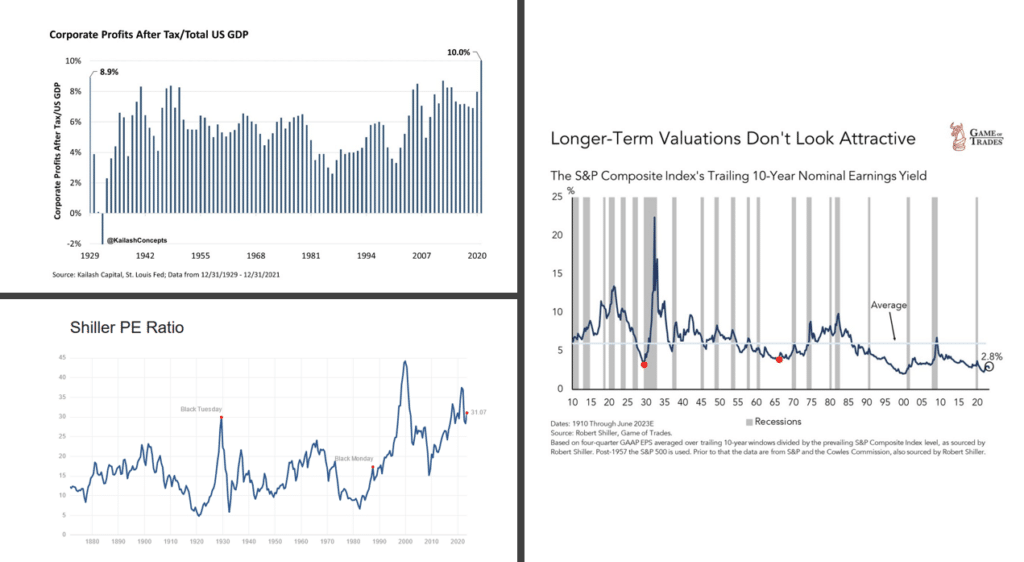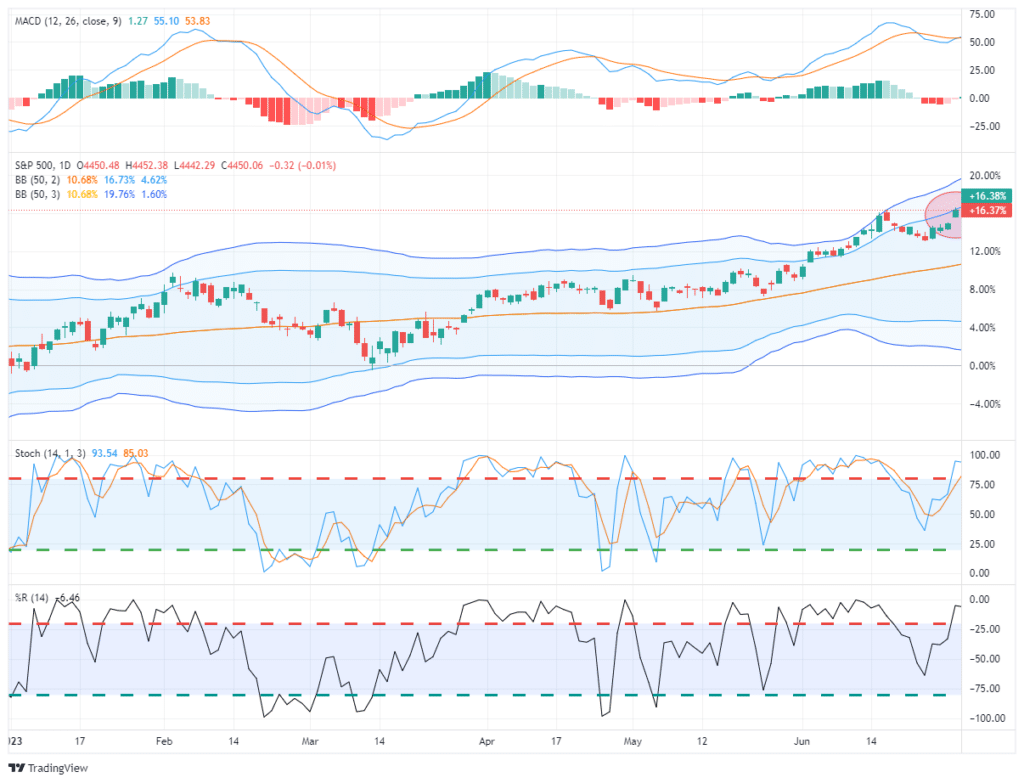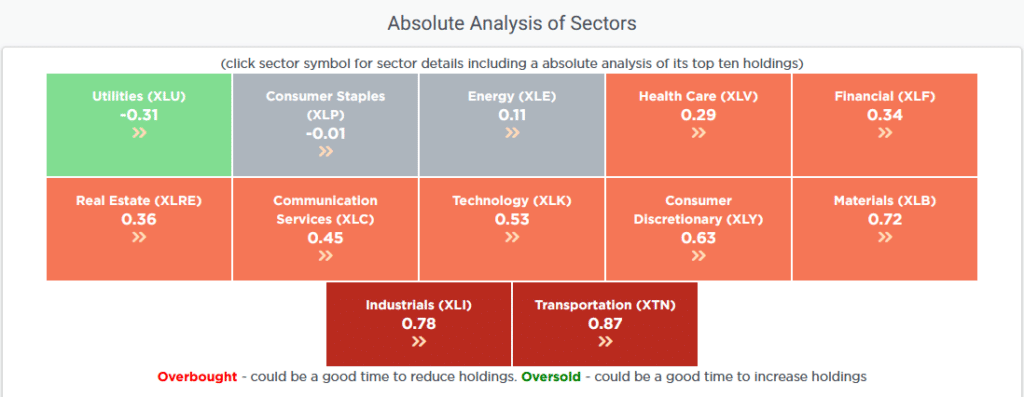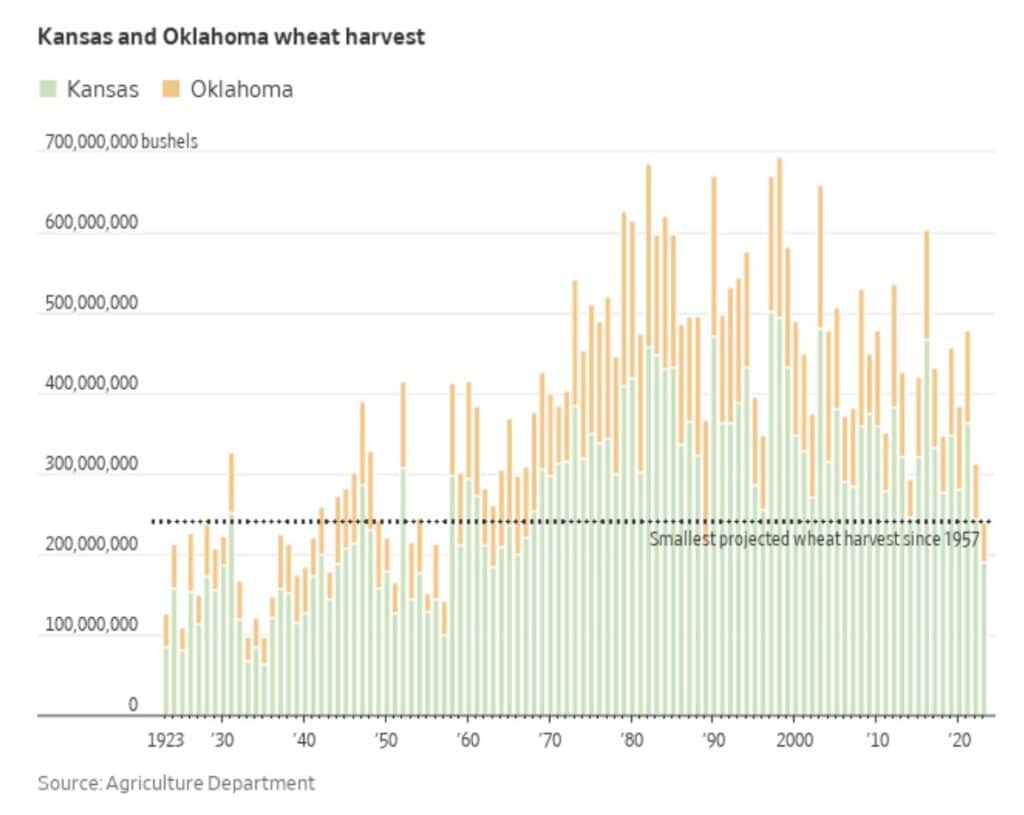Over the last three years, massive amounts of fiscal and monetary stimulus and irregular economic activity due to the pandemic have resulted in massive volatility of stock prices and earnings. Consequently, shorter-term valuations have been tough to make sense of. As such, it’s worth taking a step back and focusing on long term, lesser-followed valuation methods. The graphic below shows three standard methods of computing long term valuations. All three go back over 100 years to provide ample perspective.
The long term valuation charts below tell the story of a historically rich market. Similar levels as today’s were also seen before significant market declines. While the graphs may elicit a bearish response, it’s worth remembering that valuations can stay extreme for long periods. Warren Buffet’s favorite long-term valuation, Corporate Profits/GDP, is at a 100-year high, but it has been well above average for quite a while. Similarly, Shiller CAPE 10 and 10-year earnings yields have exceeded their respective averages for prolonged periods. Valuations are a great tool for broad context and tend to forecast long term returns well. But in the short run, rich valuations can always get richer, and those waiting for the long term can miss out on great short term opportunities.

What To Watch Today
Earnings
- No notable earnings releases today
Economy

Market Trading Update
With the market only opening half the trading day on Monday and closed yesterday for the 4th of July holiday, the markets will officially kick off the last half of the trading year and the start of the Q2 earnings season today. For the first half of the year, the market surged by 16%. As noted in Monday’s report, such strong starts to the year tend to, but not always, denote a stronger second half of the year.

With the market overbought short-term, we still expect a near-term consolidation or correction that could provide a better entry point to increase exposure. While there are certainly economic concerns, the market continues to “climb the wall of worry.” From that understanding, we have continued to increase equity exposure opportunistically slowly but remain currently underweight equities and overweight cash. We will increase our positioning accordingly on a pullback or consolidation that works off some of the more extreme short-term overbought conditions.
Up next is the Q2 earnings season, which has set a decently high bar to hurdle.


Cyclicals Outperform But Crude Oil Stays Flat
The SimpleVisor Absolute Analysis below shows that economically sensitive cyclical stocks are currently the most overbought sectors. Strength in the transportation, industrials, materials, and consumer discretionary sectors argue the market expects continued strong economic growth. With robust labor markets remaining, maybe investor bullishness in those sectors is warranted.
What is odd, however, is that crude oil prices, which are also very economically sensitive, are not nearly as bullish. For starters, the energy sector, shown below, has an absolute score well below the aforementioned cyclical sectors. More telling, crude oil’s price is near its lowest level in two years and appears to be drifting lower. Recent oil production reductions by OPEC/Saudi Arabia and 30-year lows in U.S. strategic reserves are bullish from a supply/demand perspective. If economic dynamics mimic the cyclical stocks’ pricing, one would expect crude prices to rise. Time will tell if oil or cyclical stocks are correct.


Wheat-flation Coming Soon?
The first graph below shows the expected wheat harvest in Kansas and Oklahoma is expected to come in at 65-year lows. The two states account for over 20% of the domestic wheat harvest. Despite the weak forecast, wheat futures prices show no concern as they reach the lowest levels in over a year. For now, the issues wheat farmers in Kansas and Oklahoma are having are not impacting the price. Upon entering the wheat harvest in late summer and early fall, we will better understand if reduced crops in those states materially impact wheat prices.


Tweet of the Day

Please subscribe to the daily commentary to receive these updates every morning before the opening bell.
If you found this blog useful, please send it to someone else, share it on social media, or contact us to set up a meeting.
Also Read

















